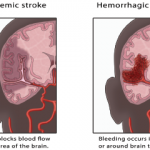
Billion Photos / shutterstock.com
Although systemic lupus erythematosus (SLE) affects both the central nervous system (CNS) and peripheral nervous system (PNS), past research has primarily focused on how lupus affects the CNS.
Now, an international, inception cohort study, “Peripheral Nervous System Disease in Systemic Lupus Erythematosus,” published in Arthritis & Rheumatology, has examined different types of PNS disease to determine how frequently it occurs, its course over time, associated outcomes and how it affects quality of life for lupus patients.1 The study found that PNS involvement is more common in SLE than previously believed.
Led by John Hanly, MD, FRCPC, a rheumatologist at the Queen Elizabeth II Health Sciences Centre and a professor of rheumatology at Dalhousie University Medical School in Halifax, Nova Scotia, Canada, the study looked at 19 neuropsychiatric (NP) events, including seven types of PNS disease.
“PNS is an important part of overall neuropsychiatric lupus and can greatly impact a patient’s quality of life,” Dr. Hanly says.
More Than 1,800 Patients Enrolled
Study patients were enrolled between 1999 and 2011 by the Systemic Lupus International Collaborating Clinics (SLICC), a network of 52 investigators at 43 academic medical centers in 16 countries. The SLICC research network was founded 27 years ago and works to support research in the lupus field and facilitate interaction among lupus researchers.
“Of the more than 1,800 patients followed in our multi-ethnic, longitudinal study, more than 8% experienced some type of PNS disease, predominantly neuropathies, that can have a negative impact on a patient’s quality of life,” says Dr. Hanly. “In our study, 161 PNS events occurred in 139 patients over an average of 7.6 years of follow-up.”

Dr. Hanley
Dr. Hanly says the study looked at 1,827 lupus patients, 88% of whom were female and 48.8% were white. Patients were evaluated annually for 19 neuropsychiatric events including seven types of PNS disease. SLE disease activity, organ damage, autoantibodies, and patient and physician assessment of outcome were measured.
The mean age for study participants was 35, and disease was assessed over approximately seven years.
Although lupus is more common in individuals of Asian descent, Dr. Hanly says his study found they were less susceptible to PNS manifestations.
“One of the biggest takeaways from our study is that SLE patients can have PNS manifestations shortly after diagnosis or at any time over the course of the disease, and that it is frequently attributed to their lupus,” Dr. Hanly says.
The most common PNS events include peripheral neuropathy, mononeuropathy and cranial neuropathy, he adds.
Of the more than 1,800 patients followed in our multi-ethnic longitudinal study, more than 8% experienced some type of PNS disease. —John Hanly, MD, FRCPC
Quality of Life Affected
“These aren’t minimal events,” Dr. Hanly stressed. “Patients who experience these symptoms report a lower quality of life and physical function, even when we took other factors into account.”
Although Dr. Hanly notes that, encouragingly, PNS symptoms resolved over time with appropriate treatment, but patients who were diagnosed with SLE at an older age, had previous neuropathy or more SLE disease activity experienced a longer recovery.
As a result, Dr. Hanly says it’s reasonable to request a neurological exam for older SLE patients who may be at risk of PNS.
“Although not all PNS manifestations occur due to lupus, we found that most do,” Dr. Hanly says. “While this is a challenging aspect of lupus, the good news is that a substantial number of patients improved with appropriate care.”
Dr. Hanly hopes the results from this study will provide a benchmark for the assessment of future treatments.
Italian Study Supports Findings
Another recent study, “Peripheral Nervous System Involvement in Systemic Lupus Erythematosus: A Retrospective Study on Prevalence, Associated Factors and Outcome,” conducted by Italian researchers, looked at SLE patient records from two referral centers between 2000 and 2014.2
As in Dr. Hanly’s study, researchers confirmed that damage accrual and advanced age are potential risk factors for PNS in lupus patients.
The researchers found that out of 1,224 patients, PNS was experienced in 85 patients, primarily women. Ninety-seven PNS events in total were reported. In two cases PNS occurred before the diagnosis of SLE, in 26 patients PNS manifestations took place at the onset of the disease, and in 57 patients PNS occurred more than three months after an SLE diagnosis.
The study also determined that high blood pressure and livedo reticularis may be risk factors for PNS in lupus patients. Smoking, secondary Sjögren’s syndrome and diabetes were also more commonly found in patients with PNS.
Linda Childers is a health writer located in the San Francisco Bay Area.
References
- Hanly JG, Li Q, Su L, et al. Peripheral nervous system disease in systemic lupus erythematosus: Results from an international inception cohort study. Arthritis Rheumatol. 2020 Jan;72(1):67–77.
- Bortoluzzi A, Piga M, Silvagni E, et al. Peripheral nervous system involvement in systemic lupus erythematosus: A retrospective study on prevalence, associated factors and outcome. Lupus. 2019 Apr;28(4):465–474.

